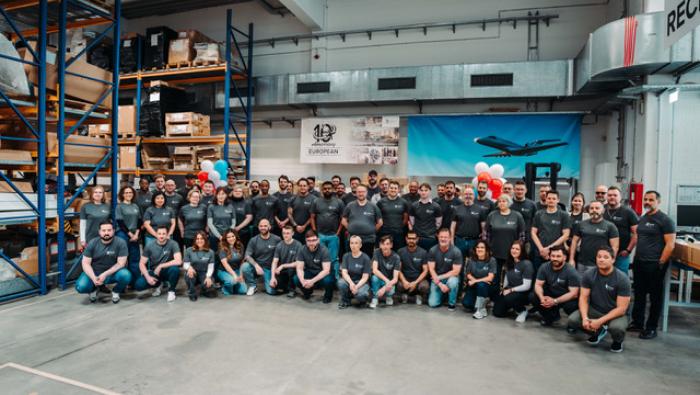The market for Gulfstream hush kits stands at fewer than 400 GIIs, GIITTs, GIIBs and GIIIs. These models are currently one of the softer areas of a soft market. This net number takes into account the 14 GIIs and five GIIIs written off over the years, as well as nearly 50 combined models that are serving in some government role and, due to the nature of their operation, would probably not need to conform to any noise requirements. (Consider that one operator sets off twin sonic booms every time its flagship reenters earth’s atmosphere. Is NASA concerned with Stage 2 vs Stage 3 requirements on its five GIIs? Will it dip into taxpayer money to quiet an aircraft that is probably among the quietest in its fleet already? Probably not.)
At 400 units, this roughly approximates the size of the active Falcon 20 fleet. Since the Honeywell TFE731-20 engine retrofit program was introduced, about 30 percent of the available candidate aircraft have been re-engined.
There’s probably a better comparison, noted Kevin Jordan, president of Business Aircraft Services, who is working in concert with Quiet Technologies Aerospace on a Stage 3 hush kit for all Spey-powered Gulfstreams. He offered that the Aviation Partners winglet retrofit program is perhaps a better example. Since that company began fitting GIIs with winglets, it has captured a figure approaching 63 percent of its market, according to Aviation Partners CEO Joe Clark.
Performance degradation of a Stage 3 hush kit could be offset, to some extent, with the installation of winglets. As Clark pointed out, most of his company’s clients ordered the winglets for aesthetic reasons, but were later impressed with the performance benefits. The remaining 27 percent of the yet to be captured winglet market may soon be approaching Aviation Partners for the range-extending benefits. For these operators another $450,000 will need to be factored into the hush-kit conversion equation.
More than 10 years ago the Spey-powered Gulfstream market was as depressed as it is now, with the inventory of GIIs about where it is now–50 airplanes. In the early 1990s there were occasions when non-hushed GIIs fell below $2 million and hushed variants (equipped with Gulfstream’s system) could be bought for $3.5 million. That was 10 years ago, when these same aircraft had less time and were much newer. The high inventory mark came in 1991 when 54 GIIs were on the market, a figure it’s not far from now. The recent low came in August 1998, when only 12 were available.
As for the GIII, its inventory never climbed as high as the GII’s, but its values were similarly depressed, and the talk of the pre-owned community 10 years ago was an AC-powered GIII that traded for about $8 million. Current GIII offerings are hovering near the 40-unit mark, in stark contrast to a three-year stretch between December 1995 through December 1998 during which the inventory never rose above 14 and dipped as low as six.
Certainly a Spey-powered Gulfstream meeting the more stringent requirements of increasingly noise-sensitive airports will benefit operators and will give further useful life to the venerable line. As for values, it will depend more on the market acceptance of the hush kit and real-life performance figures. If operators think the hush kits are the best thing since sliced bread, you will start to see a dwindling of inventory and firmer prices. If it’s not what operators are hoping for, market acceptance might parallel that of the tip-tanked GII. It will get more confusing for buyers if all of the hush kits now in the works get the FAA stamp of approval.
So, will hush money improve values in the Spey-powered Gulfstream market? Regardless of its success, it is doubtful that values will increase more than the face value of the noise remedy. Such is the case when installing thrust reversers on a non-equipped aircraft, overhauling a powerplant, adding new paint and interior, avionics and so on. Certainly there is added value, but rarely have these enhancements commanded a premium above their actual cost.







